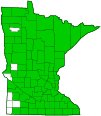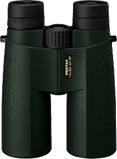Pines
(Family Pinaceae)
Overview • Description • Distribution • Taxonomy
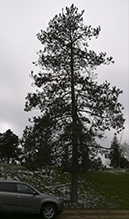
Overview
Pinaceae is a family of conifer trees and shrubs. There are 220 to 235 generally accepted Pinaceae species in 11 genera in 4 subfamilies worldwide. According to Flora of North America, there are 66 Pinaceae species in 6 genera in 4 subfamilies in North America north of Mexico. Based on observations on the Minnesota Biodiversity Atlas and on iNaturalist.org, there are at least 31 species in 6 genera in 4 subfamilies in Minnesota.
The Pinaceae occur worldwide on all continents except Antarctica. They occur throughout the Northern Hemisphere south of the Polar Zone. In the Southern Hemisphere they occur mostly in the Temperate and Tropical Zones.
The Pinaceae are economically important as the source of poles, lumber, pulp, turpentine, gums, resin, oils, industrial products, and food.
Description
The Pinaceae are mostly large to very large trees, rarely shrubs. They are resinous and mostly evergreen. Only two genera are deciduous, Larix and Pseudolarix.
The roots are ectomycorrhizal, forming a symbiotic relationship with a fungus.
The leaves are spirally arranged, but they may appear alternate or whorled. They are undivided and unlobed (simple) and either flattened and linear or needle-like. If needle-like, they are in tight bundles (fascicles) of two to five.
Pollen (male) cones and seed (female) cones are produced on the same plant (monoecious). Pollen cones are small and herbaceous. Seed cones are large and usually woody. They consist of many spirally arranged, flattened scales, each one subtended by a bract, and with usually two naked seeds at the base.
Distribution |
||
|
Sources Biodiversity occurrence data published by: Minnesota Biodiversity Atlas (accessed through the Minnesota Biodiversity Atlas Portal, bellatlas.umn.edu, 11/2/2025). |
|
| 11/2/2025 | ||
Taxonomy
Kingdom
Division
Tracheophyta (Vascular Plants)
Subdivision
Spermatophytina (Seed Plants)
Class
Pinopsida (conifers)
Subclass
Pinidae
Order
Pinales (conifers)
Subordinate Taxa
Subfamily Abietoideae
Genus Abies ![]()
![]()
Genus Cedrus ![]()
Genus Keteleeria
Genus Nothotsuga
Genus Pseudolarix ![]()
Genus Tsuga ![]()
![]()
Subfamily Pinoideae
Genus Pinus ![]()
![]()
Subfamily Piceoideae
Genus Picea ![]()
![]()
Subfamily Laricoideae
Genus Pseudotsuga ![]()
![]()
Genus Cathaya
Genus Larix ![]()
![]()
Synonyms
Abietaceae
Common Names
pines
Glossary
Ectomycorrhizal
A symbiotic, neutral, or beneficial relationship between a fungus and the tiny rootlets of a plant, usually a tree, where the hyphae surround but do not penetrate the rootlets.
Fascicle
A small bundle or cluster, often sheathed at the base, as with pine needles.
Monoecious
A characteristic of a plant that has separate male and female reproductive structures on the same individual plant.In flowering plants, staminate (male) flowers and pistillate (female) flowers. In conifers, pollen cones (male cones) and seed cones (female cones).
Visitor Photos
Share your photo of this plant.
This button not working for you?
Simply email us at info@MinnesotaSeasons.com.
Attach one or more photos and, if you like, a caption.
Nancy Falkum |
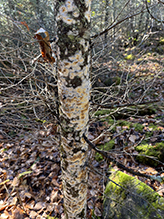 |
MinnesotaSeasons.com Photos
|

Slideshows
Pinaceae
Scott Zona
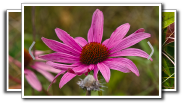
Visitor Videos
Share your video of this plant.
This button not working for you?
Simply email us at info@MinnesotaSeasons.com.
Attach a video, a YouTube link, or a cloud storage link.
Other Videos
Introduction to the Pinaceae - The Pine Family 🌿
Florida Native Plant Society
Pinaceae - UK wild plants - Five-minute families
Five-minute families

